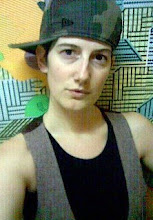Perhaps kids watch to much television these days, but one has to question whether or not it is truly a mind-numbing activity; and decide how many stereotypes are perpetuated daily.
A recent study found that while many girls watching cartoons, the lead characters in the shows are males, 2 to 1, which effects both girls and boy viewers because the characters punch up the expected norms that society would like to continue.
The female characters, when presented, were found to be oversexualized, and fall in to three categories:
1. Daydreamers: Have no goals, and want to be romantically swept away.
2. Derailed: Have goals but get romantically swept away and never return to goals.
3. Daredevils: Have goals and ambitions, not willing to let romance derail them.
What’s especially interesting is that while many characters have been designed through a socially conscious lens – the article’s writer points out Fiona from “Shrek” – research shows that animators still cannot throw a female character in to a slapstick skit (think Wile Coyote) because females getting run over would simply not be funny to much of the viewers. Nor would most viewers believe it if a "regular looking" girl were a hero (currently this only happens if the female character is masculine or if she is portrayed as a nerd). This is not to say that I suggest females start getting injured, but by leveling the playing field we have the opportunity to see girls and boys as realistic, as opposed to this fantasy of perfection.
Why is it ok for men to be the only one to be able to take on the role of hero, while they must also take on the role of stupidity? This alone may have serious affects on the way that boys grow up, and it also affects the ways in which girls view themselves (can they be a hero if they are not boys) and how they view the opposite sex.
Because there is double the number of male characters flashing across the screen, girls subconsciously take note of these ideas, while boys may not even compare themselves with the female characters unless she is a “tomboy.”
The article points to the historically all-male creators behind these shows when explaining where the disparity began. As more women made headway in the field, more well-rounded female characters began showing up. Still, the numbers are lacking:
Her report shows that, as of 2004, only 18% of WGA-employed film writers and only 27% of TV writers were women. In 2006, female membership in the Animation Guild was only 17.3%, and of these only 8% were producers, 14.9% directors and 10.8% writers. "Maybe the answer is that for change to occur even more women are needed in the creative process where key decision-making occurs at the pitch and story development level," writes Smith.
Or, as she writes in the introduction: "Clearly, along the entire creative and marketing process, participants can develop, design and engage in practical solutions to the problem of gender under-representation aimed at children. As balance and portrayals improve, children now, and the next generation of children, will be the winners. They will be exposed to entertainment in which females take up half the space and both females and males are active, diverse and complex."
And while they have a good point, it should only be up to females to break in to the world of animation, the men who are already there have the opportunity to jump in to the movement as well. Everyone suffers if collaboration is not met.
skip to main |
skip to sidebar

Please don't stand still, we must continue to ask questions, seek truths, love ourselves and others...even if this means finding out negative, uncomfortable notions. As one quote states,"Don't lose hope; when it gets darkest, the stars come out."
Sexism is a social disease. ~Author Unknown
About Me

- Social Justice Feminist
- I am a feminist. I am a sister. I am a daughter. I am a granddaughter. I have my undergraduate journalism degree from the University of Southern California.I hold a master of social work degree from Columbia University. I dissect communication, and interpret meanings through intensity. Honest and open words move me.
Sexism is a social disease. ~Author Unknown